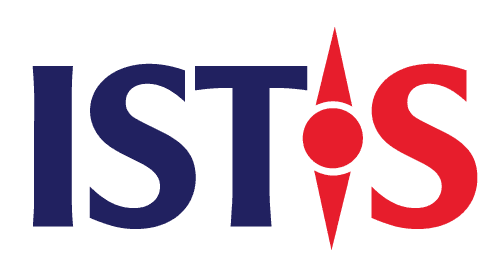Why Analysis is No Longer Optional
In today’s hyperconnected world, the amount of data generated every second is staggering. From social media interactions and mobile app usage to sensor data from IoT devices and financial transactions, we are swimming in a sea of information. The sheer scale of this data explosion has rendered traditional decision-making methods increasingly obsolete. Intuition and anecdotal evidence alone are no longer sufficient to make informed, strategic choices. Instead, organizations must turn to data-driven analysis to derive meaningful insights and gain competitive advantage.
As global digital transformation accelerates, the velocity, volume, and variety of data continue to rise. According to IDC, the global datasphere is projected to grow to 175 zettabytes by 2025. In such a landscape, those who can capture, organize, and interpret data effectively will be better positioned to innovate, predict trends, and respond to crises. Whether you are a startup founder, a policymaker, or a chief marketing officer, data has become the new oil—fueling smarter operations, more personalized customer experiences, and real-time adaptation to market shifts.
Moreover, the cost of not leveraging data is becoming clearer. Missed opportunities, misaligned strategies, inefficient resource allocation, and compliance risks can all stem from a lack of rigorous analysis. In sectors such as healthcare or national security, poor data practices can even result in loss of life. The message is clear: data is not just a technical asset; it’s a strategic one. And data-driven analysis is the key to unlocking its full potential.
Embracing data-driven thinking means cultivating a culture of evidence-based action. Leaders must prioritize data literacy, invest in analytical tools, and empower teams to ask the right questions of the data they collect. In doing so, they set the stage for more robust, agile, and forward-looking decision-making structures across industries.
What is Data-Driven Analysis?
Data-driven analysis is more than just crunching numbers — it’s the disciplined use of data to guide strategic decisions, uncover patterns, and predict future trends. It blends statistics, computing, and domain knowledge to support conclusions that are traceable and testable. In an era of digital acceleration, the difference between acting on intuition and acting on analysis can determine the success or failure of entire industries.
At its core, data-driven analysis follows a structured process. It begins with defining a clear problem or question, identifying the relevant data, and collecting that data through reliable means. Once collected, analysts clean and organize the data to remove inconsistencies, errors, or duplicates. This ensures that the analysis that follows is not only precise but also trustworthy.
Next comes the exploration phase, where data scientists or analysts use visualization tools, correlation tests, and statistical summaries to understand what the data is revealing. This stage often surfaces surprising insights — perhaps customer behavior is shifting subtly, or operational delays cluster at a certain point in the supply chain.
After exploration, advanced analytics can begin. Depending on the context, this might include regression models, machine learning algorithms, sentiment analysis, or time-series forecasting. Each method has its strengths and is chosen based on the problem type and data structure.
Data-driven analysis is iterative, not linear. Insights lead to new questions. An initial finding might suggest a deeper investigation or require segmentation by demographic, geography, or product line. This cycle continues until stakeholders feel confident in making decisions based on the data.
Importantly, data-driven decision-making must balance precision with pragmatism. Not all decisions can wait for perfect data. Analysts often work within constraints — incomplete datasets, conflicting reports, or tight deadlines. Yet, the goal remains: to reduce reliance on gut feelings and move toward evidence-supported action.
The tools enabling this kind of analysis have evolved dramatically. Platforms like Python and R provide robust libraries for statistical and predictive modeling. Data warehouses like Snowflake and BigQuery allow fast access to massive datasets. Visualization tools like Power BI and Tableau help transform complex information into accessible charts and dashboards. With these resources, even non-technical leaders can engage directly with data and derive insights on demand.
Organizations that embed data-driven analysis into their culture tend to outperform competitors. They make fewer errors, iterate faster, and seize opportunities with more confidence. From retailers optimizing inventory to hospitals predicting patient readmission risk, the applications are vast and often transformative.
Despite its benefits, implementation remains a challenge. Many companies struggle with siloed data, lack of talent, or unclear KPIs. Others encounter resistance from leadership who prefer traditional methods or fear what the data might reveal. Successful transitions require not only technology but also a mindset shift — an acknowledgment that truth lives in the numbers.
One essential aspect of data-driven analysis is storytelling. Raw data can overwhelm. But when presented with context, narrative, and visual clarity, the same information can persuade executives, align teams, and spur action. Analysts today are expected not just to analyze but to communicate — to craft insights into compelling, actionable narratives.
Moreover, data-driven analysis is not limited to the private sector. Governments, NGOs, and academic institutions increasingly depend on data to evaluate policies, allocate resources, and track development goals. From urban planning to climate modeling, data-driven thinking enables more transparent and effective governance.
In sum, data-driven analysis is a discipline that bridges insight and action. It is a vital capability in a world where agility, accuracy, and accountability are competitive advantages. Organizations that cultivate this capacity — with the right tools, teams, and culture — will be better equipped to navigate uncertainty and shape the future.
Applications Across Industries
Data-driven analysis is not just a tool for tech giants or academic institutions — it has become a universal asset across nearly every sector of the economy. As businesses and governments digitize their operations, the ability to extract value from data is shaping strategies, transforming services, and driving innovation.
In Healthcare, data-driven analysis is saving lives. Hospitals use predictive models to identify high-risk patients and intervene early, reducing readmission rates and improving outcomes. Electronic Health Records (EHRs), when analyzed collectively, help detect population health trends, manage chronic conditions more effectively, and prevent disease outbreaks. The rapid development of COVID-19 vaccines also relied on real-time data sharing and global research collaboration, showcasing how data analysis can accelerate scientific breakthroughs.
In Retail and E-commerce, companies use consumer data to personalize shopping experiences, forecast demand, and optimize inventory. Behavioral analytics help identify cart abandonment patterns, adjust pricing in real time, and refine loyalty programs. Data-driven A/B testing allows businesses to experiment with website layouts, marketing messages, and product placements — all based on measurable feedback from users.
In Agriculture, precision farming uses sensor data, satellite imagery, and weather forecasts to determine optimal planting times, irrigation levels, and pesticide use. These insights improve crop yields, reduce resource waste, and support more sustainable farming practices. Farmers are increasingly relying on analytics platforms to track soil health, monitor machinery, and make planting decisions that once depended solely on intuition.
In Financial Services, data-driven analysis underpins risk modeling, fraud detection, and algorithmic trading. Banks assess creditworthiness not only through traditional credit scores but also through non-traditional signals — like mobile phone usage patterns or online behavior — especially in emerging markets. Insurance companies analyze driving data to offer dynamic premiums, and robo-advisors manage investment portfolios based on real-time market data and user preferences.
In Manufacturing, smart factories use data to monitor equipment performance, predict failures, and reduce downtime through preventive maintenance. Supply chain analytics help manufacturers forecast demand, optimize logistics, and respond swiftly to global disruptions. For instance, during the COVID-19 pandemic, companies that had real-time supply chain visibility were more agile in rerouting orders and managing shortages.
In Education, data-driven analysis enhances both teaching and learning. Learning management systems track student engagement, performance, and participation, allowing educators to identify those who may need extra support. Institutions also use data to forecast enrollment trends, allocate resources efficiently, and measure program effectiveness. In online education, platforms analyze user data to optimize content recommendations and personalize the learning journey.
In Urban Planning and Smart Cities, municipalities use sensor networks and public data to manage traffic flows, monitor air quality, and improve emergency response. Data-driven transportation models help planners design better transit routes and reduce congestion. Real-time data dashboards support transparency and allow citizens to engage with public services more effectively.
In Energy and Utilities, smart grids analyze electricity consumption patterns to balance loads, predict outages, and integrate renewable sources more efficiently. Utilities can use predictive maintenance to identify faulty equipment before it fails. Data also plays a key role in meeting regulatory requirements and improving environmental performance through detailed monitoring and reporting.
In the Public Sector, governments rely on data-driven analysis to make evidence-based policy decisions. From allocating social services to tracking economic indicators, analytics provide a clearer picture of what’s working and what needs change. During crises like natural disasters or pandemics, real-time data enables quicker and more targeted interventions.
In Sports and Entertainment, data is transforming the fan experience and athlete performance. Sports teams analyze player movement and health data to refine strategies and prevent injuries. Streaming services use viewer behavior data to recommend content, personalize ads, and plan future productions.
Across all these sectors, data-driven analysis is shifting the foundation of how decisions are made. It empowers stakeholders to move from reactive to proactive, from static to adaptive, and from guessing to knowing. It’s not just about being data-rich — it’s about being insight-rich.
Industries that embrace data are finding new ways to serve customers, reduce costs, and gain competitive advantages. The ones that don’t risk falling behind in a world where data isn’t just information — it’s infrastructure.






